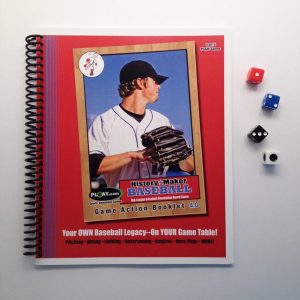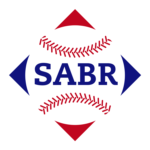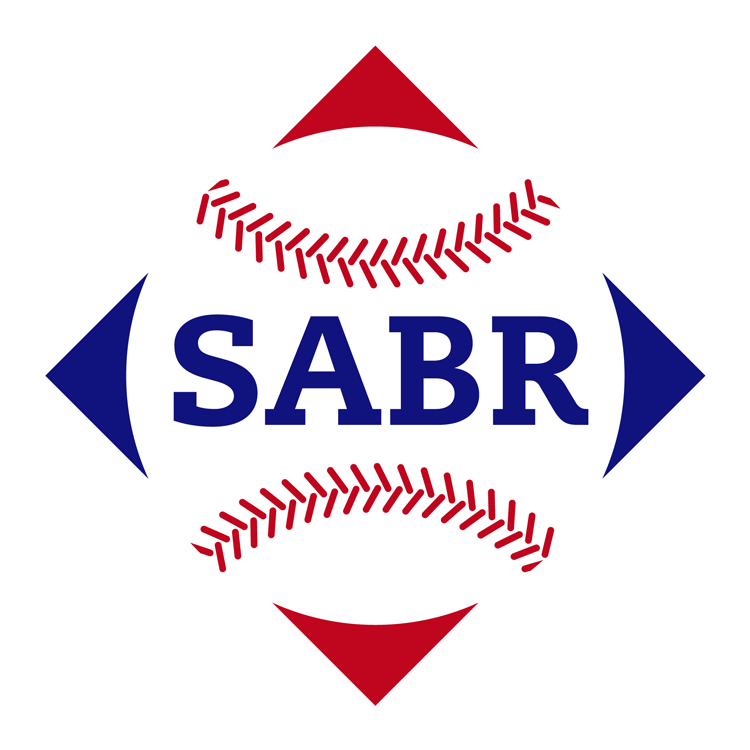I’ve been playing baseball simulation games for just a month shy of 30 years now. My first dive into the genre came right around my 5th birthday, when I received the Baseball Card All Star Game by Cap Toys, which changed my early collecting habits from stickers to baseball cards, but did not actually do a good job of simulating a baseball game upon even a cursory inspection by an experienced game player. My younger self, however, did not realize this, and wiled away many hours enjoying the experience. It wouldn’t be until I was in my late teenage years that I was introduced to APBA, and while that game does much better at covering the basics of baseball, it never really captured my imagination until a decade later. In the meantime, I got hooked on the MLB Showdown series for a few years, which appealed to me a bit more then because of its simple game mechanics and colorful player cards, but wasn’t really designed to be a hard core simulation. The biggest thing that stopped me from going further in either game, though, was that it was very difficult to go beyond the confines of the cards that I owned at any given time. I love to tinker with my game universe, create my own worlds to explore, and not feel like I’m stuck seeing the same things over and over again.
Before I get into the game I currently play and why I feel it’s the most realistic, I do want to make mention why I like APBA as a simulation. it does take into account the batter/pitcher matchup, as well as fielding (be it as a whole or by individual position), and I didn’t have any issues with the base running mechanics either. I think the engine does a good job in producing a statistically accurate simulation.
However, the biggest thing I don’t like about it is that it feels like I’m playing a spreadsheet rather than a game. It’s hard for me to get immersed in the game’s universe because the engine is telling me what happens, but it doesn’t seem to be able to convey to me why it is happening. Sure, I know that a superstar home run hitter is going to hit more home runs, but is it because he hit a pitch that an average player wouldn’t have been able to drive out of the park, or did the pitcher hang one? I don’t mean to put down APBA, because if the game I play now didn’t exist, I’d still be playing it, but there’s another game out there that FEELS more like baseball than APBA to me, and that’s History Maker Baseball from PLAAY Games.

The first thing I love about it is that for a few extra dollars, I was able to obtain a “how to” guide on how to create my own players, teams, stadiums, even umpires! Even if I never end up creating my entire own baseball universe, I at least was able to gain a full appreciation of just what statistics matter in the game, and even better, how they affect the game being played on my tabletop right then and there.
The game is a rich tapestry of various charts, but even if we just stuck to the main chart of the game and didn’t go off into various directions the game wants us to sometimes, I can know at a glance at a player’s card what type of player he is. Instead of seeing a whole spreadsheet of numbers and symbols, players are given “traits” which match up to various statistical benchmarks. A Champion, for example, will hit for a better average than a player with the Sad Sack trait, a HR King will drive a pitch out of the ballpark that a Scrapper would bloop over the shortstop, and an Active runner will score more often from second and steal bases more frequently than a player with no running trait at all, and will run circles around a runner with a Stoic trait. One glance at a card tells you all this information, instead of having to use the card many times to get a feel of what that player can or can’t do well. The main chart will also tell me if a player has, for instance, struck out because of the pitcher having a quality, or if he struck out because he’s the type of player prone to striking out in general.
The game also takes into account ballparks (big or small? Turf or grass? Both make a difference!), umpires (once or twice a game, usually, and I love this because it introduces a “human” element to a simulaton), team chemistry (maybe the outfielder doesn’t make one extra step to make a catch if his team’s been losing a lot lately, or maybe a hitter is a little less patient and pops out on a bad pitch instead of waiting for a good one), and even if a player is Hot or Cold! These extra pieces show up enough to paint a picture of what’s happening on the field that day, but not enough to distort the statistics in a meaningful way.
There’s even a pre game check for messages that may tell me, for example, one of my relievers is burned out, and isn’t going to be Fresh today, or maybe one of my hitters is having better luck seeing the strike zone lately, and will have a Good Eye trait until further notice (which, in this case, is when there are two more TFN results show up from the pre game charts, so it could be for two days or two weeks). These are just examples, you can also have players scratched from the lineup right before opening pitch, or a player could have a reason to be happy while the overall team mood is down, or vice versa.
As far as what strategy the game offers, not only does it offer the obvious (being able to set lineups, make changes during the game, call for the hit & run or steal bases, set the infield back or in, in other words, the bare minimum of what any game should offer), but there are also manager strategy cards that allow for arguing with the umpire to change the mood of the team, take visits to the mound to add a trait or change which secondary chart the next play is rolled on, and more. What’s even better, in my eyes, is that none of those cards are missed all that much if I’m playing the game solo, and just want to watch the action unfold. It can be as deep of a strategic experience as I want it to be, whether that’s matching wits with an opponent across the table or sitting back and taking in the game as if I have a ticket right behind the plate.
In short, my definition of “realism” in a game is to not only be statistically accurate, but to tell me a story while we’re at it. Make me feel like I’m at the game, and I’ll keep coming back.
Joe Pritchard has won the 7th game of the World Series in wiffleball, video games, board games, and of course, in his dreams. Joe can be found at usfltecmo@Hotmail.com and @usfltecmo on Twitter.

